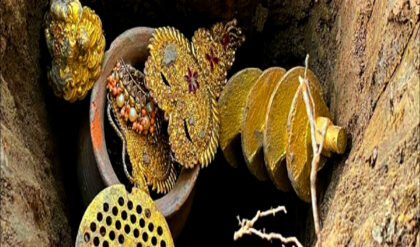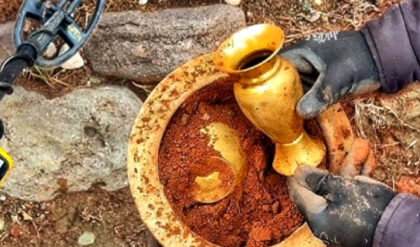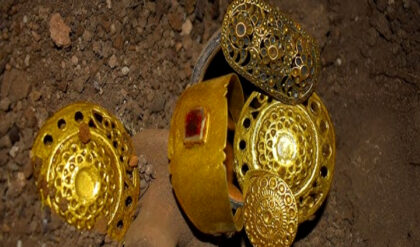The discovery of an astonishing gold stone, with an intricate shape reminiscent of a king cobra, has left experts and archaeologists alike stunned and intrigued. The discovery, made by a single man, not only displays a remarkable feat of craftsmanship but has also sparked a wave of curiosity and intricacy in the archaeological community.

The remarkable find, which resembles a king cobra in its intricately detailed form, raises more questions than it answers for researchers. The sheer complexity and skill involved in crafting such a gold piece, depicting a cobra (an important and powerful symbol in several cultures), has presented a puzzling situation for archaeologists and historians. Its creation challenges conventional understanding of the period from which it originates and questions existing notions about the technological and artistic capabilities of that era.

The discovery of this limestone artifact has not only caused a stir in archaeological circles, but has also drawn attention to the potential symbolism and meaning behind its creation. The king cobra’s resemblance to a real cobra raises questions about the cultural, religious, or ceremonial implications it might have had for the ancient civilization that created it.

The gold piece, shaped like a king cobra, has become a headache for archaeologists due to the enigmatic mysteries it contains. The complexity of the piece, its symbolic representation and the technological sophistication required for its creation offer a new dimension to the understanding of ancient crafts and arts.

This peculiar artifact adds an unexpected layer to the historical narrative, prompting a reappraisal of the cultural and artistic sophistication of the culture from which it originated. The discovery of the gold ingot not only reveals the artistic skills of ancient craftsmen, but also changes modern perceptions of the technological achievements of bygone eras.
The mystifying nature of the king cobra-shaped gold coin serves as a testament to the mysteries that continue to exist in the field of archaeology. It stands as an emissary to the unexplored territories of ancient history, offering an intriguing puzzle that demands to be deciphered, providing insight into the cultural significance and artistic expression of a science.



